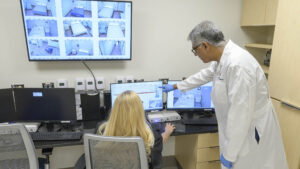How to Reduce Overhead Costs in a Medical Practice: A Comprehensive Guide to Financial Efficiency
Medical Practice
Medical Practice
Running a successful medical practice requires more than just excellent patient care—it demands shrewd financial management and operational efficiency. With healthcare costs continuously rising and reimbursement rates often stagnating, medical practices face increasing pressure to optimize their overhead expenses without compromising the quality of patient care. Understanding and implementing effective cost-reduction strategies can mean the difference between a thriving practice and one that struggles to remain viable.
Overhead costs in medical practices typically account for 50-70% of total revenue, making them a critical area for optimization. These expenses include everything from rent and utilities to staff salaries, medical supplies, and technology systems. By taking a strategic approach to overhead reduction, practices can improve their bottom line while maintaining or even enhancing their service quality.

Understanding Your Current Cost Structure
Before implementing any cost-reduction measures, it’s essential to conduct a thorough analysis of your practice’s current financial situation. This involves categorizing all expenses and identifying which areas consume the largest portion of your budget. Most medical practices find that their highest overhead costs fall into several key categories: personnel expenses, facility costs, technology and equipment, medical supplies, and administrative expenses.
Start by reviewing at least 12 months of financial data to identify spending patterns and seasonal variations. Look for trends in each expense category and compare your costs to industry benchmarks. Many practice management consultants recommend that personnel costs should not exceed 25-35% of gross revenue, while facility costs should remain below 10-15%. Understanding these benchmarks helps identify areas where your practice may be overspending.
Create a detailed budget that breaks down expenses by category and department. This granular view of your finances will reveal opportunities for cost savings that might not be apparent when looking at aggregate numbers. Pay particular attention to recurring monthly expenses, as small reductions in these areas can compound into significant annual savings.
Optimizing Personnel Costs
Staff salaries and benefits typically represent the largest overhead expense for most medical practices. However, reducing personnel costs requires careful consideration to avoid negatively impacting patient care or staff morale. The key is to optimize staffing levels and improve productivity rather than simply cutting positions.
Begin by analyzing your staffing patterns and patient flow throughout the day and week. Many practices discover they’re overstaffed during certain periods and understaffed during others. Implementing flexible scheduling can help align staffing levels with patient demand, reducing unnecessary labor costs while ensuring adequate coverage during busy periods.
Cross-training staff members to handle multiple responsibilities can significantly improve efficiency and reduce the need for specialized positions. For example, training medical assistants to handle both clinical and administrative tasks provides flexibility in scheduling and can reduce overall staffing requirements. Similarly, having front-desk staff trained in basic insurance verification and billing procedures can streamline operations.
Consider implementing performance-based compensation structures that reward productivity and efficiency. This approach can motivate staff to work more effectively while ensuring that labor costs correlate with practice revenue. However, be careful to structure these incentives in ways that don’t compromise patient care quality.
Evaluate your benefits packages to ensure they’re competitive but not excessive. Sometimes small adjustments to health insurance plans, retirement contributions, or other benefits can yield significant savings without drastically impacting employee satisfaction. Consider offering alternative benefits that employees value but cost less, such as flexible work arrangements or professional development opportunities.
Reducing Facility and Operational Expenses
Facility costs, including rent, utilities, maintenance, and insurance, represent another significant overhead category. While some of these expenses are fixed, there are numerous opportunities for reduction through strategic planning and operational improvements.
If you’re renting your facility, consider renegotiating your lease terms, especially if you’ve been a reliable tenant for several years. Landlords are often willing to reduce rent or provide tenant improvements rather than lose established tenants. When negotiating, present data showing your payment history and the value you bring as a tenant.
Energy costs can be reduced through simple efficiency measures. LED lighting retrofits, programmable thermostats, and energy-efficient equipment can significantly reduce utility bills. Many utility companies offer rebates for energy-efficient upgrades, making these improvements even more cost-effective. Regular maintenance of HVAC systems ensures they operate efficiently and can prevent costly emergency repairs.
Evaluate your insurance coverage annually to ensure you’re not over-insured or paying for unnecessary coverage. Work with an insurance broker who specializes in medical practices to identify potential savings. Sometimes combining policies or increasing deductibles can reduce premiums while maintaining adequate protection.
Consider sharing facility costs with other healthcare providers through subleasing arrangements or shared office spaces. This approach can significantly reduce occupancy costs while potentially creating referral opportunities. However, ensure that any shared arrangements comply with healthcare regulations and don’t create conflicts of interest.
Streamlining Technology and Equipment Costs
While technology can improve efficiency and patient care, it can also represent a significant overhead expense if not managed carefully. The key is to invest in technology that provides clear returns on investment while avoiding unnecessary or redundant systems.
Conduct regular audits of your software subscriptions and technology services. Many practices accumulate multiple software solutions over time, some of which may have overlapping functions or may no longer be necessary. Consolidating systems or negotiating better rates with current vendors can yield immediate savings.
When evaluating new technology purchases, calculate the total cost of ownership, including training, maintenance, and upgrade costs. Sometimes less expensive solutions provide better long-term value when all factors are considered. Additionally, consider cloud-based solutions that often have lower upfront costs and include maintenance and updates in their subscription fees.
Lease versus purchase decisions should be based on careful financial analysis. While leasing may have higher total costs over time, it can provide better cash flow management and ensure access to current technology. For practices with limited capital, leasing can be a more viable option than large equipment purchases.
Negotiate with vendors for better pricing, especially if you’re purchasing multiple items or have been a loyal customer. Many vendors have flexibility in their pricing and may offer discounts for practices willing to serve as references or case studies.

Managing Supply Chain and Inventory Costs
Medical supplies represent a significant and often overlooked area for cost reduction. Implementing effective inventory management and supply chain optimization can reduce waste and lower procurement costs without affecting patient care.
Establish proper inventory controls to prevent overstocking and waste. Many practices order supplies too frequently or in quantities that exceed their actual needs, tying up cash and risking expiration of time-sensitive items. Implement systems to track usage patterns and establish reorder points based on actual consumption rather than estimates.
Negotiate with suppliers for better pricing and terms. Group purchasing organizations (GPOs) can provide significant discounts on medical supplies by leveraging the buying power of multiple practices. Even small practices can often access GPO pricing through their local medical associations or hospital affiliations.
Consider generic or alternative products when appropriate. While some medical supplies require specific brands for quality or compatibility reasons, many items can be substituted with less expensive alternatives without affecting outcomes. Work with clinical staff to identify opportunities for cost-effective substitutions.
Implement waste reduction programs to minimize supply usage without compromising care. This might include training staff on proper supply handling, implementing portion control measures, or finding ways to reuse or recycle appropriate items within regulatory guidelines.
Improving Administrative Efficiency
Administrative inefficiencies can significantly increase overhead costs through wasted time, duplicate efforts, and processing errors. Streamlining administrative processes can reduce costs while improving patient satisfaction and staff productivity.
Automate routine administrative tasks wherever possible. Patient scheduling, appointment reminders, insurance verification, and billing processes can often be automated, reducing staff time and improving accuracy. While automation systems require initial investment, they typically provide rapid returns through reduced labor costs and improved efficiency.
Implement electronic health records (EHR) systems if you haven’t already, and optimize existing systems to maximize efficiency. Proper EHR implementation can reduce documentation time, improve billing accuracy, and eliminate many paper-based processes. However, ensure staff receive adequate training to realize these benefits.
Outsource non-core functions when it makes financial sense. Services like medical billing, transcription, and IT support can often be outsourced at lower costs than maintaining in-house capabilities. However, carefully evaluate outsourcing partners to ensure they maintain quality standards and comply with healthcare regulations.
Reduce paper usage and associated costs through digital processes. Electronic forms, digital signatures, and online patient portals can eliminate much of the paper, printing, and mailing costs associated with traditional practice management.

Maximizing Revenue Cycle Management
While not strictly an overhead cost reduction, improving revenue cycle management can have the same effect on your bottom line by increasing revenue without proportionally increasing costs. Efficient billing and collection processes ensure that your practice captures all revenue it has earned.
Implement strong front-end processes to verify insurance coverage and collect patient portions at the time of service. It’s much more cost-effective to collect payments upfront than to chase them after services are rendered. Train front-desk staff to handle insurance verification efficiently and collect copays and deductibles before patients are seen.
Reduce claim denials through improved coding accuracy and timely submission. Denied claims cost time and money to resolve and can significantly impact cash flow. Regular training for coding staff and implementation of claim scrubbing software can reduce denial rates and accelerate payment.
Establish effective collection procedures for outstanding accounts. While no one enjoys collection activities, prompt follow-up on overdue accounts is essential for maintaining healthy cash flow. Consider using collection agencies for severely delinquent accounts, but implement strong internal collection procedures first.
Monitoring and Continuous Improvement
Cost reduction is not a one-time activity but requires ongoing monitoring and adjustment. Establish key performance indicators (KPIs) to track your progress and identify new opportunities for improvement.
Create monthly financial dashboards that highlight key metrics such as overhead costs as a percentage of revenue, cost per patient visit, and expense trends by category. Regular monitoring allows you to identify problems early and make adjustments before they significantly impact your practice’s financial health.
Involve staff in cost reduction efforts by creating awareness of practice finances and incentivizing cost-conscious behavior. Staff members often have insights into operational inefficiencies and may suggest cost-saving measures that management hasn’t considered.

Regularly benchmark your practice’s performance against industry standards and similar practices. This comparison helps identify areas where your costs may be out of line and provides targets for improvement efforts.
Conclusion
Reducing overhead costs in a medical practice requires a comprehensive approach that examines every aspect of operations. Success depends on careful analysis of current costs, strategic implementation of reduction measures, and ongoing monitoring of results. The key is to reduce costs without compromising patient care quality or staff morale.
Remember that cost reduction is not about making the cheapest choice in every situation, but rather about optimizing value and eliminating waste. Sometimes investing in better technology or processes can reduce long-term costs even if initial expenses are higher.
By implementing the strategies outlined in this guide, medical practices can significantly reduce their overhead costs while maintaining or improving their service quality. The result is a more financially stable practice that can better serve patients and provide job security for staff members. In today’s challenging healthcare environment, effective overhead management is not just beneficial—it’s essential for long-term success.



